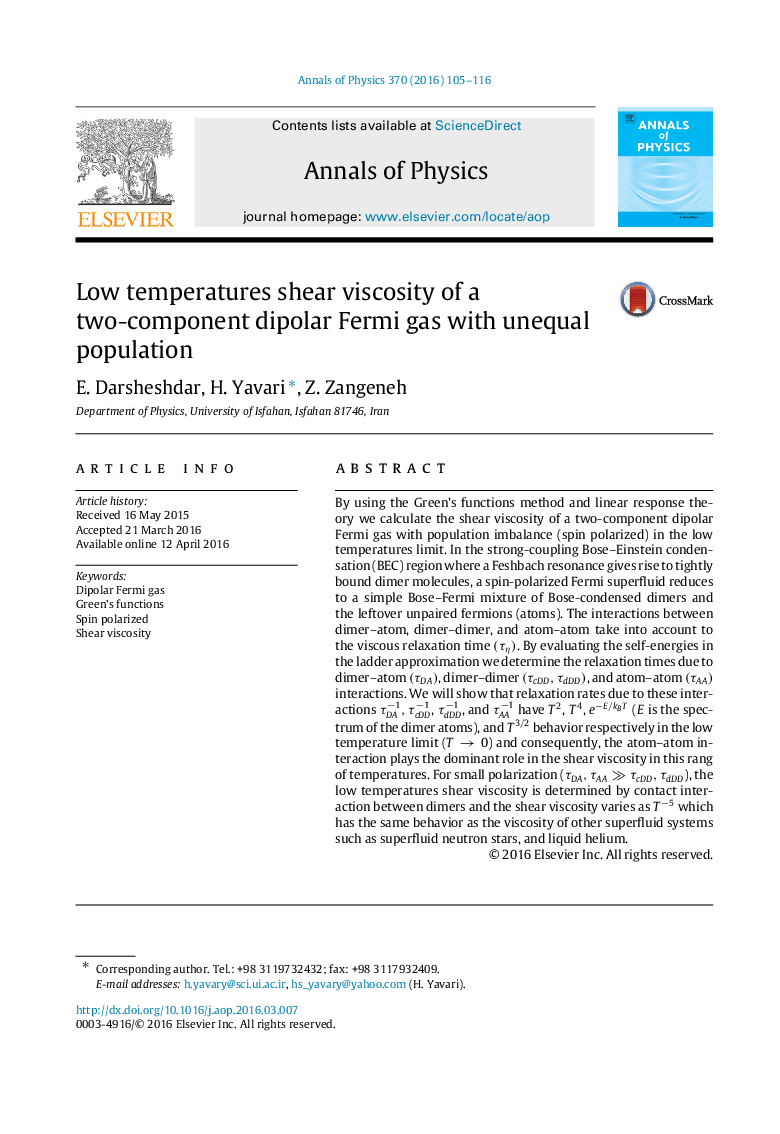| Article ID | Journal | Published Year | Pages | File Type |
|---|---|---|---|---|
| 8201745 | Annals of Physics | 2016 | 12 Pages |
Abstract
By using the Green's functions method and linear response theory we calculate the shear viscosity of a two-component dipolar Fermi gas with population imbalance (spin polarized) in the low temperatures limit. In the strong-coupling Bose-Einstein condensation (BEC) region where a Feshbach resonance gives rise to tightly bound dimer molecules, a spin-polarized Fermi superfluid reduces to a simple Bose-Fermi mixture of Bose-condensed dimers and the leftover unpaired fermions (atoms). The interactions between dimer-atom, dimer-dimer, and atom-atom take into account to the viscous relaxation time (Ïη). By evaluating the self-energies in the ladder approximation we determine the relaxation times due to dimer-atom (ÏDA), dimer-dimer (ÏcDD,ÏdDD), and atom-atom (ÏAA) interactions. We will show that relaxation rates due to these interactions ÏDAâ1,ÏcDDâ1, ÏdDDâ1, and ÏAAâ1 have T2, T4, eâE/kBT (E is the spectrum of the dimer atoms), and T3/2 behavior respectively in the low temperature limit (Tâ0) and consequently, the atom-atom interaction plays the dominant role in the shear viscosity in this rang of temperatures. For small polarization (ÏDA,ÏAAâ«ÏcDD,ÏdDD), the low temperatures shear viscosity is determined by contact interaction between dimers and the shear viscosity varies as Tâ5 which has the same behavior as the viscosity of other superfluid systems such as superfluid neutron stars, and liquid helium.
Related Topics
Physical Sciences and Engineering
Physics and Astronomy
Physics and Astronomy (General)
Authors
E. Darsheshdar, H. Yavari, Z. Zangeneh,
